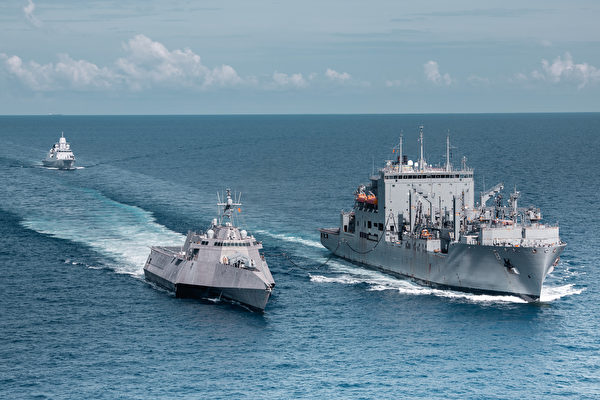The United States Pacific Fleet announced on Wednesday (May 22) that the US Navy conducted bilateral operations with the Royal Netherlands Navy in the South China Sea to enhance interoperability between the two countries and improve joint preparedness capabilities.
Participating vessels in this operation included the US Navy’s Independence-class littoral combat ship USS Mobile (LCS-26), the Lewis and Clark-class dry cargo ship USNS Wally Schirra T-AKE 8, and the Dutch Navy’s De Zeven Provinciën-class frigate HNLMS Tromp (F803).
Captain Sean Lewis of Destroyer Squadron 7 stated, “The Netherlands is one of our oldest and uninterrupted bilateral relationships, dating back to the 18th century. I look forward to opportunities to work with our partners and allies.”
“We are committed to maintaining stability in the Indo-Pacific region and upholding the freedom of navigation in critical maritime corridors,” Lewis added.
The US Navy emphasized that this bilateral operation offered a valuable opportunity to enhance allied interoperability, conduct complex scenario exercises, and improve joint preparedness capabilities.
Commander Yvonne van Beusekom of HNLMS Tromp remarked, “We are fortunate to collaborate with allied nations for their replenishment support to us.”
“Our joint actions strengthen our relationship with US cooperation partners,” she said. “We look forward to continuing coordination between the two countries to promote peace and stability in the Indo-Pacific region.”
The Pacific Fleet stated that the US Navy regularly conducts high-level maritime exercises with allies and partners, with the scale, scope, and complexity of these exercises and operations continually increasing to enhance interoperability, deterrence, and demonstrate shared determination.
During this operation, Destroyer Squadron 15 served as the coordinator between Destroyer Squadron 7 and the Royal Netherlands Navy. Multilateral actions not only enhance interoperability among allied navies but also serve as a backbone for a free and open Indo-Pacific region.

